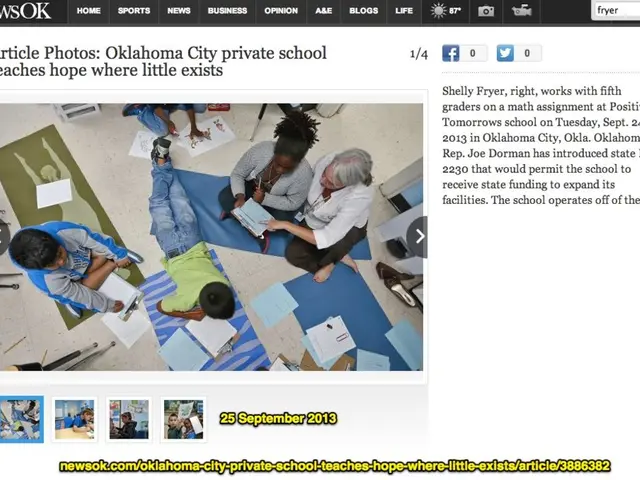School crossovers and inter-school interactions are becoming more frequent.
Teaching Shortage Fuels Growth of Uncertified Instructors in German Schools
In today's German education landscape, the number of uncertified teachers, known as "lateral entrants" and "side entrants," are on the rise. According to the Federal Statistical Office (Destatis), approximately 10.5% of teachers at general schools in the 2023/24 school year — around 77,600 out of a total of 739,500 — didn't complete the recognized teaching degree required.
Just seven years ago, this percentage was half as high. The figures from the 2015/2016 school year show that only 4.5% of general school teachers lacked a recognized teaching certificate, equaling 29,900 uncertified teachers out of a total of 667,400.
Interestingly, the proportion of "lateral entrants" and "side entrants" at vocational schools is even higher: in the 2023/24 school year, 16.6% of the total 123,800 teachers at these schools didn't have a recognized teaching certificate. This isn't much different from the 2015/16 school year, where the percentage stood at 16.8%.
The rising demand for skilled teachers is a key factor driving this trend. In the 2023 examination year, around 29,000 teaching students passed their final examinations, a slight increase from the previous year (28,700). However, this number is still 12.6% lower than ten years ago.
In addition, the number of first-year students starting a teaching degree in the Bachelor or state examination program has increased slightly after a decline in the previous years. For the academic year 2023, around 46,400 people started a teaching degree, which is 2.4% more than in the previous year but still slightly lower than ten years ago.
The Story Behind the Scarcity
The surge in uncertified teachers is primarily due to an imbalance between supply and demand, exacerbated by several factors. These include demographic changes, regional and subject-specific shortages, growing demands from policy changes, and systemic underestimations of demand.
Implications for Education
The influx of uncertified teachers raises concerns about quality, workforce instability, increased workload for schools, and potential educational inequality. While these solutions may address immediate staffing issues, they need to be paired with long-term strategies to maintain high-quality education for all students.
Addressing the Shortage
To tackle this issue, steps like implementing alternative certification programs, targeted recruitment, robust induction and support systems, long-term workforce planning, leveraging technology, and collaboration can help alleviate the shortage and its implications for the education system.
In the context of the growing teacher shortage, discussions surrounding education-and-self-development and general-news are crucial, as the surge in uncertified teachers is raising concerns about the quality of education and potential educational inequality. Long-term strategies, such as implementing alternative certification programs, targeted recruitment, and robust induction and support systems, are necessary to address this issue and ensure high-quality education for all students.







